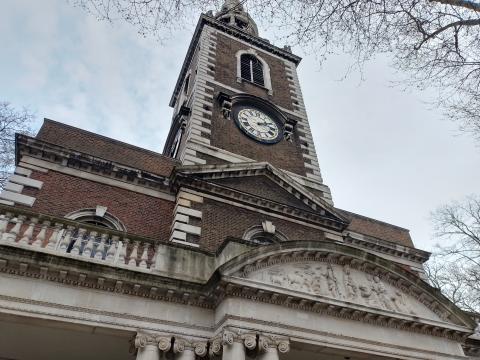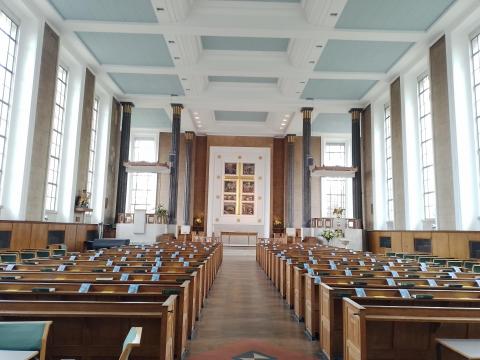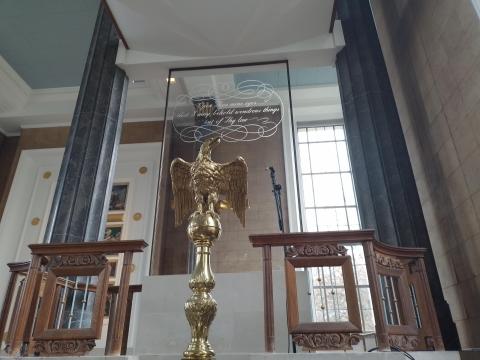St Mary's Church, Islington

Between my arrival on the Tube and the time at which I could appear at my guesthouse, I called at St Mary’s Church at Islington, Middlesex. Before entering some significant church, I do little research; I like to identify its main features myself and read up about them afterwards.
This is a significant church for a number of reasons. Charles Wesley was once curate and a regular preacher here, but, he wrote, “the Churchwardens forbad my preaching”. Furthermore, Robert Browne was once ‘lecturer’ here. According to his enemies, which were many, he led the ‘Brownist Sect’, known today as Congregationalists. He suffered 32 separate imprisonments before the Lord called him home. St Mary’s was also the place in which Philip Quaque, the Church of England’s first black clergyman was baptised in 1759. So a very interesting church indeed!
As I passed beneath the rather imposing eighteenth century tower, I entered the nave. It was tastefully built and furnished, but it was quite clearly mid-twentieth century. In London, this can only mean German bomb damage, which, sure enough, was received on the third night of the London Blitz, in September 1940.

Unusually for a church re-build, the authorities appointed a decent firm of architects, Seely and Paget, and they was given sufficient funds to do a good job. The place is vast and airy, with a peculiar lectern and pulpit one enters via stone steps. Their aim was to encapsulate a "renaissance of evangelical worship". Although St Mary’s has retained some of that gospel ardour, few today would associate the wider denomination with either 'evangelical’ or ‘rebirth’.
One feature particularly struck me. A number of the desks, pews and other furnishings have plaques on them, revealing which organisations or persons provided them for the new, 1950s’ incarnation of St Mary Islington. Although Arsenal Football Club donated, and the local chamber of commerce, so too did other London churches. I rather love the fact that in those days of post-war austerity and economy, churches in particular would give financial support to other churches.
St Mary’s is a reminder that damaged churches can be rebuilt, but there is a role for other fellowships to play in their rising again.

- Log in to post comments


 Sunday Worship 10.45am & 6.00pm
Sunday Worship 10.45am & 6.00pm